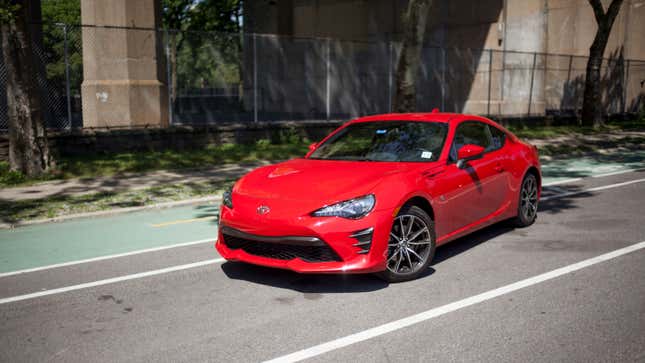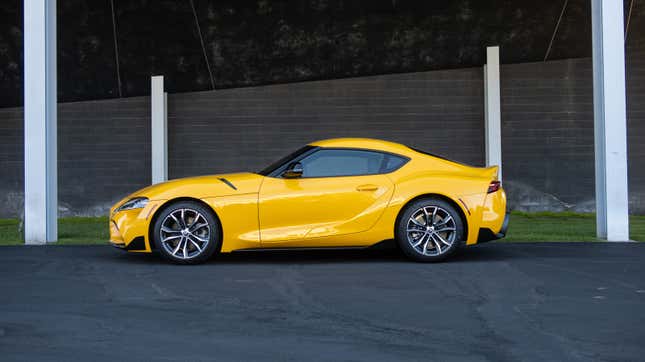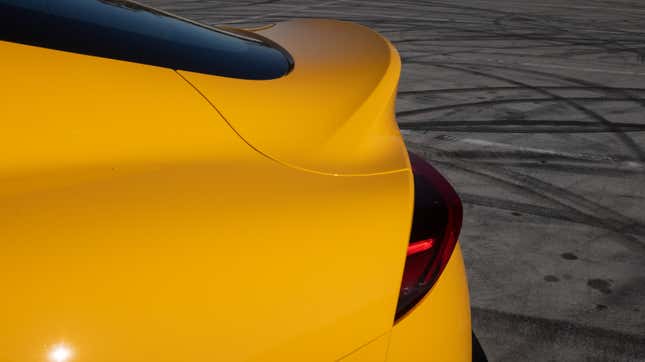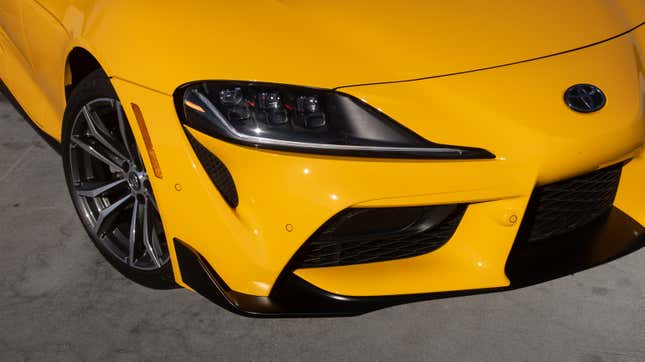Few cars have caused me as much inner conflict as the new Supra. It’s so cool that this nameplate is back! Bummer it’s not an original Toyota product.
It looks incredible on the street! Shame it’s not exceptional to drive.
Now there’s a less-expensive model, with a smaller engine, and I’ll tell you what: It’s alright.
(Full disclosure: Toyota loaned me a 2021 yellow four-cylinder Supra for a week to road test and an 2020 six-cylinder model. I have not driven the revised and significantly more powerful 2021 six-cylinder 3.0 model.)
I have a special love for ’90s tuner cars, of which the previous (fourth generation) Supra is a legend. I’m not going to waste any time harping on that because it’s been rehashed over and over.
So let’s just say you’re a driving enthusiast (welcome!) thinking about getting a new sports car (sounds like fun), scratching your head at a Toyota store (let’s do it.)
For about $30,000 you could be into an 86. This dumb name is attached to a pretty great car with a 205-horsepower engine, rear-wheel drive, a three-pedal manual trans and even a rear seat adequate for shuttling small children in a pinch. (It’s 200 HP if you choose the automatic transmission.)

The 86’s biggest downside is unavoidably connected to what makes it great: The lack of insulation, vital to its light weight and fun demeanor also makes it noisy. The car’s not exactly cheap in dollar terms, but it feels it when you look around the cockpit’s slabby expanses and low-rez displays.
Stepping up to a Supra solves a lot of those livability weaknesses, though the suspension is set pretty tight and the ride is on the harsh side. Both the four- and six-cylinder Supras feel significantly more refined than even the nicer GT trim 86, though. In spite of its wild body styling, the Supra feels like a much more adult automotive choice, with a downright plush interior and quieter cockpit.
You’re looking at about $45,000 for a four-cylinder 2.0 model (the two-liter engine, 255 HP); a nicely equipped six-cylinder 3.0 (yep, three-liter) is more like $55,000. But you end up giving up more than money for the tradeoffs compared with an 86. Simply put: The Supras I’ve driven just don’t have as much flavor as Toyota’s considerably cheaper manual-shift sports car, despite of their significant HP advantage.
So, why is the Supra, a cooler-looking performance car with more power, less fun to drive than its slower little sister?

You don’t need a comprehensive track test to figure this one out. The new Supra is a modern luxury car with a very stylish sports car body. The 86 is a competent execution of a classic formula: Manual shift, rear-drive, low curb weight.
Sports cars aren’t complicated. If nostalgia is what you’re sniffing for a hit of, the 86 is the car you want. The Supra may have the classic emblem but the 86 (aka FR-S; BRZ; GT86) is the closest thing to a great ’90s tuner car you can buy new right now. Well, that and Nissan’s 370Z. But we’re talking Toyotas today.
The fact that I set out to write about the 2021 Toyota Supra 2.0 and have spent most of this blog yapping about other cars should tell you something, but I don’t mean to dismiss the Supra.
The Supra 2.0 is really cool looking, gets a lot of attention from onlookers, feels plenty satisfying when you step on the gas and it most certainly does not feel slow. I already mentioned that it’s pretty comfortable to sit in, which becomes increasingly valuable with every minute you spend in it.
There’s not a lot going on inside the Supra, in terms of design or accessories. I don’t mind simplicity. In fact, I’d say I’m a fan. But the energy I got from a lot of the elements inside this car was more “bland” than “lean.” It’s a sea of blackness. Even the gauge cluster, which has the tachometer featured prominently — something I love — seems to hide information in an effort to put minimal color on any interior surface.
That big chunk of plastic in the bottom steering wheel spoke really bothers me, too. It makes the car’s main control look like a cheap toy.
As a sports car, a driver’s car, it left me a little unsatisfied. The bottom line is that Supra 2.0 just felt too numb to thrash and a touch too stiff luxuriate in. Frankly, I had the exact same problem in the 2020 six-cylinder car I drove. If your tastes differ, I could understand falling in love with the look and having enough fun with the novelty of a new Supra. It’s not for me, though. Which feels weird to write, as a huge fan of the exterior design.
I mean, come on. There are so many of fun lines on it:



For those who do get seduced by the Supra, I would suggest seriously considering the 255-horsepower 2.0 over the 382-HP 3.0. The less expensive car’s got it where it counts: the name and the look. The acceleration is sufficient.
The last time I drove an in-line 6 Supra it made only 335 HP, and the bump for 2021 is pretty serious, but zoom isn’t what I thought the car was missing. It’s soul that the car still needs to find, regardless of which engine it has.
